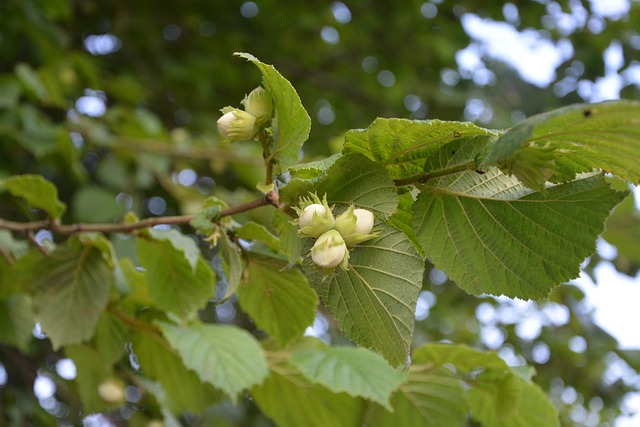
Foraging as Family Ritual
At the cusp of August’s golden hush and September’s soft descent, we return to the hazel groves. It’s a quiet ritual now—me, my husband and children—stooping beneath the leaf-shadow to gather nuts. They pocket them eagerly, cracking shells with delight along the way.
I don’t eat them myself. For me, it’s the gathering that matters. The noticing. The way the land offers its small abundance, and how we respond with open hands, grateful for nature’s bounty.
Species & Subtlety – Hazel and Cobnut
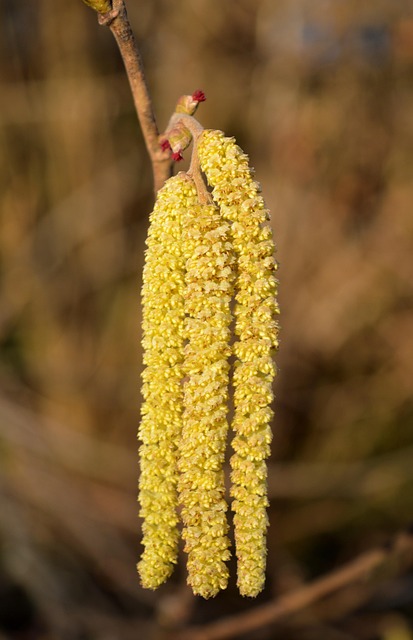
Hazel is self-pollinating, though it carries out this quiet exchange with remarkable grace. In early spring, its bright green catkins dangle like soft tassels—visible, cheerful, a promise of renewal.
But the female flowers are something else entirely: tiny, crimson-tipped, tucked into the buds like secrets. They remind me of miniature bottlebrushes—little red fronds, delicate and easily missed, yet pulsing with quiet potency. Most pass them by without seeing, yet they are the hidden heart of the tree’s fertility.
By summer, hazel wears its fullness proudly. The leaves are broad and softly serrated, catching light in their downy green palms. They form a gentle canopy, sheltering birds, insects, and the slow ripening of fruit.
And then, as the season turns, comes the bounty—clusters of nuts, soft as velvet and nestled in frilled, skirt-like husks, offered in abundance. It’s a generosity that feeds wildlife, nourishes families, and reminds us of the quiet power of tending and time.
Nestled among the leaves, we find nuts of both hazel and cobnut—so alike they often pass as one. Their husks frill and flare in slightly different ways, cobnuts sometimes larger, more elongated, but the trees themselves blur at the edges.
They hybridise freely here in Wales, as if the land prefers kinship over clarity. They’re both part of this late-summer generosity, this quiet offering before the fall. Most wouldn’t notice the difference, and perhaps that’s part of the magic.
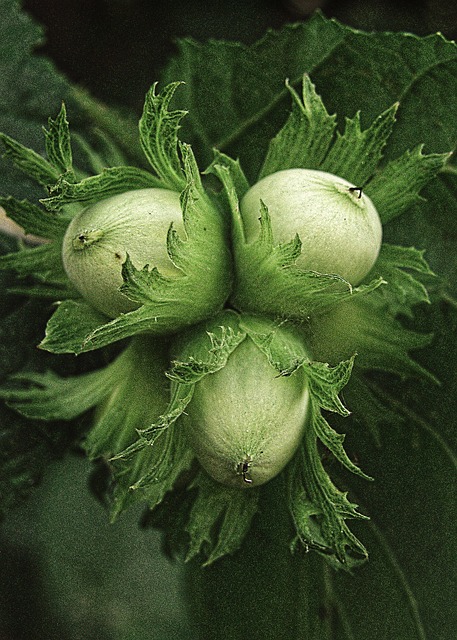
These nut-bearing branches remind me that identity in nature is rarely fixed—it’s fluid, relational, shaped by place and season.
Craft & Coppice – Hazel’s Generous Form
Hazel has long been a tree of utility and grace. Its slender stems respond well to coppicing, returning again and again with pliant shoots—an ancient rhythm of cutting and regrowth.

In hedgerows, it stitches boundaries with quiet strength. Its wood bends into baskets, hurdles, walking sticks, and cradles. There’s something deeply reciprocal in its nature: it offers without depletion, if tended with care.
And then there’s the divining rod. Forked hazel twigs, held lightly in hand, used to sense water beneath the soil. I’ve begun to explore this myself—not as spectacle, but as a way of attuning to the land’s quiet language.
Hazel, in this form, becomes a guide—not pointing, but responding. Not commanding, but noticing.

This wasn’t always dismissed as whimsy. For generations, farmers and water boards employed men to dowse for water, trusting the subtle pull of hazel to reveal underground springs. It was a recognised skill, passed down through hands and hedgerows.
A reminder that intuitive practices—especially those rooted in relationship with land—have long held practical value, even if modern eyes sometimes forget.
Hazel Across the World
Across cultures, hazel has quietly threaded itself into stories of protection, insight, and renewal. In Slavic traditions, hazel branches were swept through homes to ward off illness or misfortune, while nuts nestled in cradles guarded infants from wandering spirits.
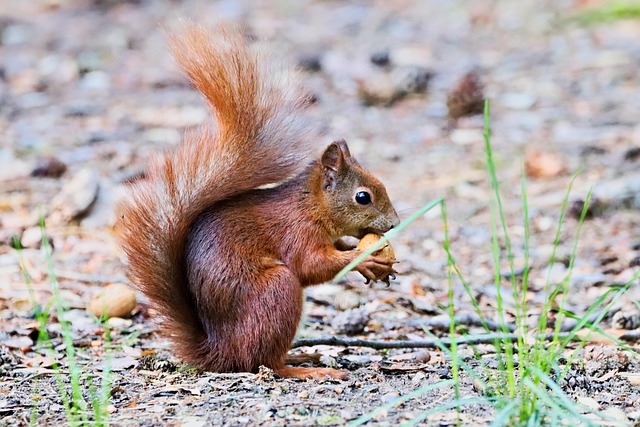
Germanic folklore saw squirrels hoarding hazel nuts as guardians of hidden knowledge, and in parts of Eastern Europe, hazel twigs played roles in spring fertility rites.
Even in Norse herbal texts, hazel appears as a subtle ally—used in salves and charms to shield against serpents and shadow.
In Celtic, Irish, and Welsh traditions, hazel stands at the heart of mythic knowing.
It is the tree of poetic insight, growing around the sacred Well of Wisdom where its nuts fell into the water. The salmon who ate them became the wisest of all creatures, and when the poet Finn tasted that salmon, he inherited its gift.
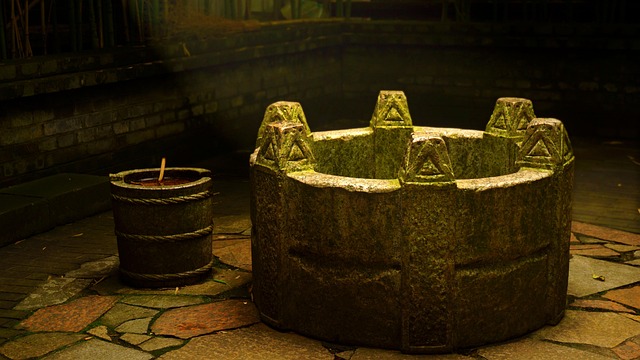
Hazel was revered by Druids, not only for its practical uses in coppicing and craft, but for its symbolic power—used in divination, storytelling, and seasonal rites. In Welsh lore, hazel groves were places of threshold, where the veil thinned and the land whispered its secrets. It is a tree of sovereignty and subtle guidance, offering wisdom not through force, but through quiet relationship.
Health Benefits of Hazel
And now, science begins to echo what myth has long held. Emerging research suggests that hazelnuts—rich in antioxidants and essential fatty acids—may protect neural tissue from oxidative stress, lowering the risk of neurodegenerative conditions like Alzheimer’s.
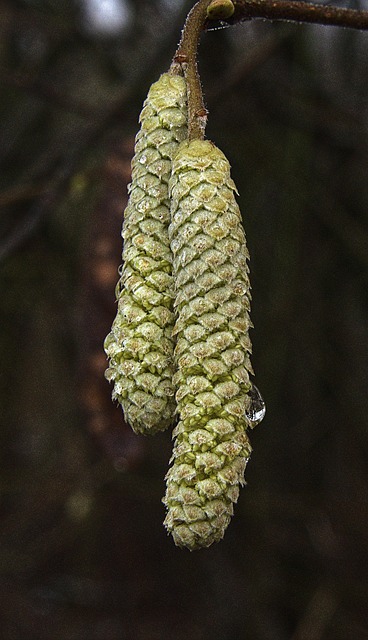
These same compounds are linked to enhanced cognitive function, supporting memory and mental clarity. It’s tempting to see this as confirmation: that the Celts, the Druids, the poets who revered hazel as a tree of wisdom, were attuned to something real.
They may not have named fatty acids or neural pathways, but they knew—through story, ritual, and relationship—that hazel nourished the mind as well as the body. The salmon who ate the nine hazel nuts and gained insight wasn’t just a metaphor. It was a remembering.
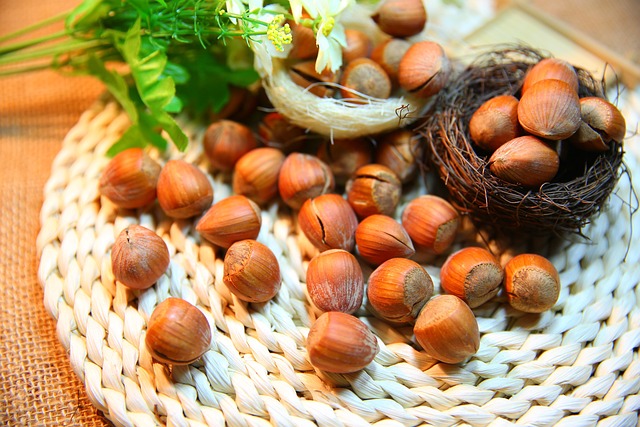
Hazel’s gifts extend beyond the mind. Its nuts are rich in vitamin E, magnesium, and healthy fats—nutrients known to support heart health, strengthen connective tissue, and bolster immune defences. They offer anti-inflammatory benefits and a quiet fortification against the wear of time.
To older generations, hazel may have been seen as a tree of protection not just in spirit, but in body. Whether woven into fences or gathered into baskets, its presence was both practical and medicinal. They may not have named antioxidants or cardiovascular support, but they knew hazel as a source of resilience—a tree that nourished, shielded, and endured.
Hazel’s Quiet Wisdom
From family foraging rituals to ancient myth, hazel stands as a tree of threshold—bridging summer’s abundance and autumn’s descent.
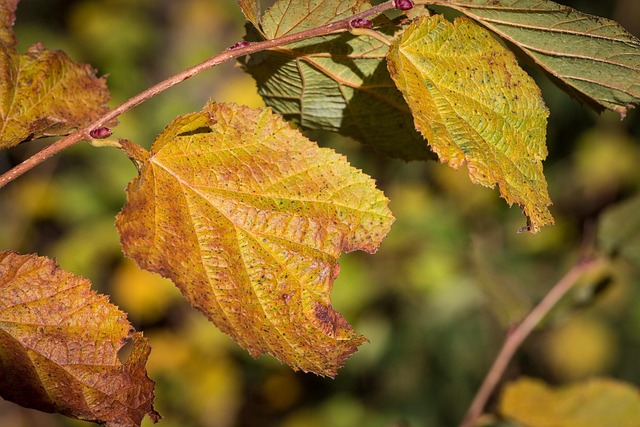
We’ve wandered through its subtle species, its role in craft and coppicing, its use in divining water and warding off harm. In Celtic lore, hazel is the tree of poetic insight, feeding the salmon of wisdom with its sacred nuts.
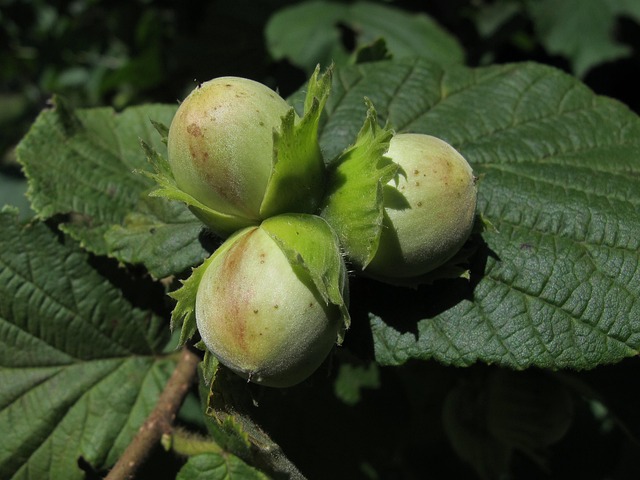
And now, modern science begins to echo these old truths: hazelnuts support brain health, heart resilience, connective tissue, and immune strength.
It seems hazel has always been a tree of protection and clarity—whether held in hand, woven into fence, or eaten with reverence.
Is hazel beginning to show us what our ancestors already knew?
What other wisdom and secrets might hazel—and her green companions—still hold, waiting to be noticed?
🌿 Leave your thoughts in a comment below. Let’s listen together…
Ancient wisdom meets modern science: if you’d like to explore how nuts—including hazel—may support memory and learning, you’ll find more here
If you’re drawn to the golden hush of late summer, you might enjoy my Lughnasadh reflection—where harvest, myth, and ritual meet in the turning of the wheel. Read it here.

Leave a Reply